Connecting valleys of Paro and Thimphu, the Druk Path Trek takes the route through High Mountain passes, yak grazing pastures, clean lakes, and while crossing the tree line, the trek offers majestic views of highest mountain peaks of northern Himalaya. Bhutan’s northern Himalaya boasts to be the highest peaks in the world to unclimbed. The trek also takes the route through Phajoding Monastery which then descends visitors to the capital city.
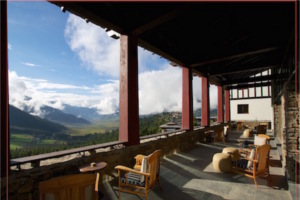
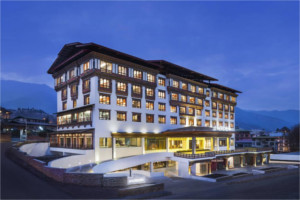
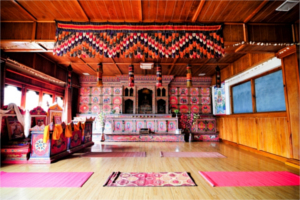
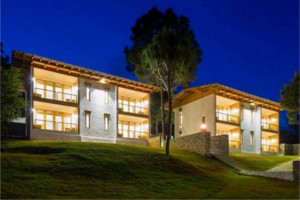
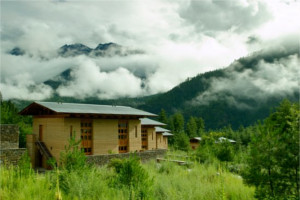
Fly into Paro valley.
The fight into Bhutan over the Himalayas is one of the most spectacular experiences. Particularly the flights from Delhi (India) and Katmandu (Nepal) fly past the majestic Mt.Everest, Kanchenjunga and the entire Himalayan range, visible on the left side of the plane as it glides towards Bhutan. On landing at Paro you will be received by our representative. After customs and Immigration formalities, you will be escorted to Thimphu, the capital city.
Overnight in Thimphu.
After lunch visit Kyichu Lhakhang, the oldest temple in Paro. Originally built in 7th century by Tibetan Emperor, it’s one of the 108 temples he built in the region. The temple is believed to have spiritual treasures concealed by Guru Padmasambhava and the two orange trees in the courtyard defy the natural way of orange trees usually growing in lower altitude and it’s believed to bear fruit throughout the year.
Early breakfast.
Hike up to Paro Taktsang, the famous Tiger’s Nest. Perched on the cliff side at height of 900m above the Paro valley, the 3hr hike is the most trodden route in Bhutan as every visitor land up visiting the landmark. It is believed that Guru Padmasambhava flew on this site on a Tigresses back and meditated there for months eventually bringing Buddhism to Bhutan.
Distance: 10kms. Altitude: 3535m
Take a short trek to Jele Dzong which takes about three and a half hour gradual to ascend. The climb till the camp gives the view of the small valley of Paro beneath. The campsite also offers the majestic view of Mt. Jhomolhari, the second highest unclimbed mountain in the world.
Overnight at camp.
Distance: 10kms. Altitude: 3700m
Begin with about an hour and half gradual ascend towards Jangchulakha through rich alpine forest and colourful rhododendron trees. The campsite gives an opportunity to see grazing yaks.
Overnight at camp.
Distance: 11kms. Altitude: 3800m
Follow the trail through the mountain ridge with views of surrounding mountains and valley below in clear days. Reach the campsite nearby a lake (Jimilangtsho) which is famous for its giant-sized trout fish.
Overnight at camp.
Distance: 11kms. Altitude: 4100m
Through the dwarf rhododendron forests, trek to the highest altitude of 4100m to Simkota Tsho via another lake Janetsho. The trail falls along the yak herders camps as well giving the trekkers chance to have a glance of yak herders culture and way of life.
Overnight at lakeside camp.
Distance: 10kms. Altitude: 3600m.
Begin with a gradual climb enjoying the majestic view of Mt. Gangkar Phuensum, the highest unclimbed mountain in the world can be visible in clearer days.
Small descend and again climb to Phumela pass at 4210m.
Descend towards Phajoding from where the site offers beautiful valley of Thimphu.
Distance: 8kms. Altitude: 2400m.
Descend towards Thimphu valley through blue pine forest. At even leisure pace the descend takes approximately two hours for a nice shower and lunch at the hotel at Thimphu.
Overnight at Thimphu.
Breakfast
Visit the National Memorial Chorten (Stupa), built in memory of the 3rd King of Bhutan. Visit the Art School and Changangkha Lhakhang (a temple built in 12th century by a Tibetan saint).
Lunch
Visit the National Takin Reserve Center to see Takin, the national animal of Bhutan and Trashichhodzong (fortress of glorious religion). Trashichhodzong in its current form was completed in 1968 and it houses the throne room of His Majesty the King of Bhutan. It is also a center of monastic body and houses main secretariat building. The majestic Dzong located along the Wangchu (Thimphu River) has a Tendrel Thang which is the venue for Thimphu Dromchoe and Thimphu Tsechu, the annual Thimphu Festival where thousands of people fill the courtyard to witness the mask dances, traditional dances, and many more.
Visit Semtokha Dzong, five miles from main Thimphu town, the Dzong is considered to be the first ever built by Zhabdrung Ngawang Namgyel in 1629, therefore the oldest fortress in Bhutan. Located on a ridge overlooking the entire valley, the Dzong houses a chapel for protective deities Yeshe Goenpo (Mahakala) and Palden Lhamo of Bhutan.
Stop at Dochula pass 3100m on route to Punakha from Thimphu. Dochula pass is one of the famous landmarks in Bhutan from which one can sight the Himalayan Range of Bhutan on clear winter days. The place is adorned with Druk Wangyel Chorten, 108 stupas built to honor the 4th king of Bhutan and bring peace to the region. The stupas were built under the patronage of Ashi Dorji Wangmo Wangchuck.
Descend to Punakha Valley (1280m).
Punakha valley served as the capital of Bhutan till 1955 until it was shifted to Thimphu. The Punakha Dzong is still the winter seat of Je Khenpo (Chief Abbot) of the monastic body as the place has a temperate climate with Phochu and Mochu Rivers flowing through the fertile fields of the valley.
Visit Punakha Dzong.
Punakha Dzong or Pungthang Dewa Chenpai Phodrang, the palace of bliss was built in 1937 by Zhabdrung Ngawang Namgyel. The second oldest Dzong is religiously and architecturally significant to Bhutanese as it houses several sacred relics, scriptures, statues and is the place where the first king of Bhutan was crowned in 1907. Punakha Dzong is also famous for Punakha Drupchen where the 17th-century battle scene with Tibetan invaders are recreated and is followed by Punakha Tsechu where grand Thongdrel of Guru Rinpoche is unfurled with costumed mask dances and rituals.
Overnight at Punakha
Visit Khamsum Yulley Namgyel Chorten.
The eminent Monastery which is also referred as Punakha Zangdopelri was built with the sponsorship of her Majesty the Queen Mother Ashi Tshering Yangdon Wangchuck under the guidance of Dilgo Khyentse Rinpoche and Lam Sonam Zangpo to bring peace in the world. The short hike up to the Lhakhang along the paddy fields is one of the most scenic short hikes one can take and the view from the top of the Lhakhang is often described as picturesque, breathtaking and enriching by the visitors.
Visit to the new Temple and nunnery of Sangacholing on way to Talo Village.
Photography: Anytime.
Overnight at Punakha.
Drive to Paro via Dochula pass.
Visit Chimmi Lhakhang, the temple of Lama Drukpa Kuenley (The Devine Mad Man). Chimmi Lhakhang was built in 1499 by Lam Ngawang Chogyel on the spot where Lama Drukpa Kuenley subdued a demon who was fleeing away in form of a dog and buried the demon naming the spot as khe mae (no dog now). Hence the temple was named Temple of no dog (Chimmi Lhakhang)
Stop for Lunch at Dochula Pass or Thimphu Town depending on driving time and conveniences.
Overnight at Paro.
Best season:
March to June (peak), July to August (moderate), and September to November (Peak)
Group size:
Minimum 4 pax.
Temperature:
Days are normally warm. Nights can be bit colder to extend of below freezing point in winter season.
What to bring for the trek?
Durable and comfortable trekking boots.
Sunglasses
Sunblock creams
Personal hot water bottle
Headgear
Raincoat
Warm clothing for cold evening.
Sleeping bag
Torchlight may be handy.
daily tariff:USD 250 Per person per night
surcharges:
Solo Traveller: USD 40 per night
Dual Traveller: USD 30 per person per night
Three travellers and above: surcharges not applicable
Visa fees: One time payment of USD 40 per person.
daily tariff:USD 200 Per person per night
surcharges:
Solo Traveller: USD 40 per night
Dual Traveller: USD 30 per person per night
Three travellers and above: surcharges not applicable
Visa fees: One time payment of USD 40 per person.
A minimum of 3 star accommodation (4 & 5 star may require an additional premium).
All meals
A licensed Bhutanese tour guide for the extent of your stay
All internal transport (excluding internal flights)
Camping equipment and haulage for trekking tours